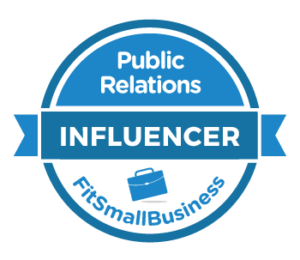Working in PR seems the reverse of the old quote:
“I refuse to join any club that would have me as a member.”
Groucho Marx
The club, or field of PR, can disdain those who want to join; particularly people so entrenched that they lack little “real world” experience.
For example I started interviewing for PR gigs in my late thirties, after taking a circuitous route through various sales, marketing and IT consulting roles. When all was said and done PR seemed to be my thing, so I set out to interview for client-side and agency gigs while picking up some freelancing business.
I had no idea what kind of opportunities awaited for someone with my eclectic background. But the comments were mostly positive. “Refreshing!” “We like to see other kinds of experience, not just PR.” One in particular, the owner of a boutique tech PR agency was thrilled that I was an electrical engineer and former IBM-er like him. Fusion CEO Jordan Chanofsky made me an offer over 20 years ago – and I am still here today. (The funny thing was, that soon after I joined, I felt out of my element, due to lack of experience working for an agency).
All these years later I can safely say that, if you want to work in PR, sure, it is great to have related experience. But thinking outside the PR box can make you better at your job, as I find many myopically see every situation as a PR challenge that demands a PR solution.
What does this mean, and why should we think out of our “bleeping PR heads?” Which other POVs can be valuable?
The Gatekeeper
One of the most obvious POVs to consider is the gatekeeper, or journalist. Yet too many PR people don’t do this well.
Why? Thinking like a good journalist is critical for PR; it’s important to be inquisitive, a good storyteller, and yes, often skeptical.
Why is it a challenge? It is much easier to mass blast a pitch than take the time to read their stuff and personalize the approach. Also, we like to be optimistic and not focus on the long odds. That said, sending and praying, optimistically, is not good; or is falling in love with your own ideas and pitches.
How to do better? Read their articles. Follow them on social media. Be as skeptical as they are. Realize you have to be smart and creative, and work hard to earn their attention. Dig for something press-worthy. Get to know them, this makes it easier to understand their story appetites and sourcing criteria.
Results: Pitches that hit home, better PR outcomes, stronger journalist relationships.
The Buyer and User Audiences
It can help to see things from the perspective of the audiences we target: the personas who use the company’s product or service, and those who influence the purchasing decision. We reach them directly on social media or through gatekeepers.
Why? If the news and content we promote does not resonate, our PR efforts will fall on deaf ears. And, guess what: aligning with the hot topics and pain points of end users can be key to journalist buy-in, because ideally you are targetting those who write for these audiences.
Why a Challenge? Most PR people don’t have hands-on experience with the often esoteric technologies. We’re not steeped in the lives, routines and perceptions of users, CIOs and other decision-makers.
Even if you work on the client/industry side, it’s a fair bet that you suffer from the isolation of the marketing department. The result is an overreliance on jargon and copy-and-paste writing, a challenge that I described in Finding the Words that Work in Tech PR:
There’s a trap I think some of my tech PR colleagues fall into. In an effort to sound savvy and speak in the language of the targeted audience… they rely on recycled, empty (but “safe”) prose that may have originated in the marketing department… Add to this that internal marketing staff and the agency may well not have the technical knowledge or familiarity of the markets they are serving to pick the words that resonate with customers and prospective customers.
How to See it from their PoV: Try to understand the worlds they inhabit. Bounce ideas off of friends who work in the field. Try out the tech, if you can. Take in demos, attend conferences. Avoid gobbledy gook puke, use words and tell stories that are more meangful and impactful.
Results: Better stories and business outcomes.
The Strategist
Our PR programs are part of the larger marketing and business picture for our clients. Our clients and employers compete in the larger world. So if you don’t heed the bigger picture, your counsel and programs will be less effective. It is important to think like a CMO or military strategist – to be aware of tools in the arsenal, the playing field and plan accordingly.
Why a challenge?
It takes research and effort to stay up-to-date, with the competition and other marketing tools and strategies. And, let’s face it, most of us do not have the POV that comes with working as a CMO or military strategist.
How to do better
Get smart about other marketing tools, tech and tactics. Understand how PR interplays with others in the mix. Research the market, follow the plays of the competition.
Read the classic and trendy books in marketing, the ones that marketers and CEOs wave around. There are so many good ones. Some of my faves include Marketing Warfare, by Ries and Trout; Crossing the Chasm, by Geoffrey Moore; Play Bigger, by Ramadan, Peterson, Lochhead and Maney; and Blue Ocean Strategy, by Kim and Mauborgne.
Results: Better counsel and marketing integration, and more impactful storytelling.






